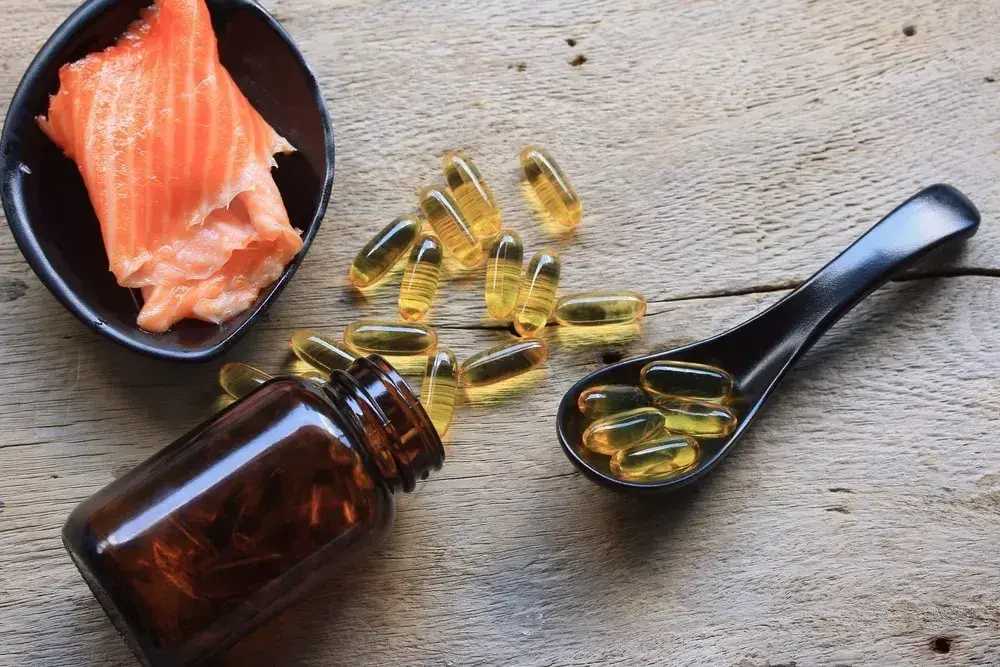5 min read
Cycle Syncing: Should Your Diet Change According To Your Menstrual Cycle?
Garcia Weight Loss
:
Oct 30, 2018 12:00:00 AM

/assets/images/provider/photos/2579698.jpg)
A woman’s body is in a constant state of fluctuation. Until she reaches menopause, a woman experiences regular hormonal ebbs and flows with every menstrual cycle. With an average cycle lasting 25 to 35 days, it’s safe to say that some type of change is almost always occurring in the body as it prepares the egg and uterus for fertilization.
These hormonal shifts don’t affect just the reproductive organs, however. Most women will say that their changing hormone levels affect everything from energy levels to appetite to mood. Premenstrual syndrome is a good example of hormones affecting how you feel, but there are other — often more subtle — changes that happen at the other phases of your cycle.
Knowing how much the monthly cycle affects a woman’s total well-being, it makes sense to modify your diet to match what your hormones are doing at that moment. Food can have a profound impact on how you feel physically, and this is especially important when you’re in a constant state of hormonal change. Changing your eating habits to match your cycle — known as cycle syncing — can help you feel more in control of the hormonal shifts, rather than letting them control you.
How to use cycle syncing
In order to eat better according to your menstrual cycle, you must first understand how your cycle works. Each menstrual cycle is a process of preparing an egg for maturity and fertilization followed by a period of preparing for a possible pregnancy. Finally, the cycle comes to an end with the shedding of the uterine lining, or period.
While the period is often considered the first day of a menstrual cycle, it’s actually the end of one. A true period occurs only after a woman has ovulated and experienced the final phase of her cycle. But, for simplicity, the first day of menstruation is typically considered day 1 of a new cycle.
Throughout your cycle, your basal body temperature will fluctuate. This is a good indication of where you are in your current cycle. Finding your BBT is easy: purchase a basal thermometer and take your temperature at the same time every morning before you get out of bed. Mark the temperature on a BBT chart or use an app to record it. Over time, you will see a pattern in your BBT that stays fairly consistent each month.
The day counts listed here are merely averages. If your cycle falls outside of these numbers, don’t be concerned. Women have a lot of variation in their menstrual cycles; this is normal.
Menstruation: Days 1-5
Commonly known as your period, this is when the uterine lining sheds and you have bleeding. Your BBT may be at a medium point, where it will remain for the next several days. Estrogen and progesterone levels are at a hormonal low point at this time. This can lead to sluggish energy levels. Cramping, bloating, and endometriosis can cause significant pain. Low estrogen levels may trigger migraines in some women.
If your periods last more than seven days or you have a few days of spotting at the end, it can be hard to determine when your period is actually over. Count the last day of flow (not spotting) as the last day of menstruation when it comes to your diet changes.
- Focus on plant-based iron-rich foods to help fight fatigue. The blood loss of menstruation can decrease iron levels, especially if you bleed heavily. Legumes like beans and lentils, and nuts and seeds are great sources of iron. Added bonus: these foods are a great source of plant-based protein, which boosts energy levels and keeps blood sugar stable.
- Drink plenty of water. Staying hydrated will help you flush out the bloating and avoid an afternoon slump. Avoid caffeine and alcohol, which increase water retention and may trigger headaches.
- Avoid processed foods with salt or sugar. Salt increases water retention and bloating, leading to more discomfort. Processed sugar may make inflammation worse, which can add to cramping and pain from endometriosis. Many processed foods contain high amounts of both. Aim to eat only fresh fruits, vegetables, and lean meats — and skip anything that comes in a box or bag.
- Avoid fast food and other high-fat, fried foods. These foods aren’t good for you in general, but eating them during your period will cause increased feelings of sluggishness and bloating.
Follicular phase: Days 6-12
During this phase, the hormone estrogen rises rapidly as the body gets an egg ready for fertilization. A hormone known as follicle-stimulating hormone (FSH) governs this process, stimulating one egg (or sometimes more) to grow and get ready to be released. Progesterone climbs as well, helping to thicken the uterine lining. Your BBT will gradually drop lower as estrogen levels climb. But, don’t be surprised if it jumps around slightly as you approach the next phase. This is normal.
Higher levels of FSH, estrogen, and progesterone can naturally raise a woman’s libido. You may feel your energy levels rise with each day, and your mood may be stable and positive.
- Keep your momentum going by eating a variety of colorful fruits and vegetables. Your energy levels will increase even more with this rich supply of phytonutrients, and you may find that your productivity at work is even higher than normal. Take advantage of this feel-good time by loading your body up with nutrient-dense foods.
- Estrogen is high, and your digestive system needs to process it. Eating foods that help with digestion will help this process along, keeping you feeling great. Fermented foods such as kefir, kombucha, sauerkraut, and tempeh will kick digestion into high gear and provide you with nutrients not found in other foods that keep this system running smoothly.
Ovulation: Days 13-16
This is, in many ways, the peak of a woman’s cycle. Estrogen and progesterone levels have reached their highest point. Your BBT may drop much lower than normal on the day of ovulation. The follicle releases the prepared egg and it awaits fertilization for one to three days. The empty follicle remains and continues to produce estrogen and progesterone to support ovulation. For many women, this is when they feel their most energetic and happy.
- Prepare for the next phase in your cycle by helping the liver along. Drink matcha green tea and eat avocado and cruciferous vegetables. These foods support the liver and help it start metabolizing the high levels of hormones.
- Eat citrus fruits and leafy greens to help detox the body. These foods will help your body through the transition that’s awaiting you as you enter the last phase of this cycle. Even a healthy, normal function like ovulation naturally produces some waste that the body must remove. Oranges, lemon-infused water, spinach, and kale will start to flush out excess hormones and provide you with nutrients to complete ovulation and allow the hormones to shift once again.
Luteal phase: Days 17-28
After ovulation, the body gears up for a possible pregnancy. It thickens the uterine lining even further with a surge of progesterone. This causes your BBT to rapidly rise to a much higher level, where it will remain for a few days. The egg’s follicle continues to produce estrogen and progesterone. If the egg isn’t fertilized, the body gets the message and the follicle begins to shrink. It gradually stops producing estrogen and progesterone and levels decrease as the period approaches. Your BBT may start to drop.
This is when many women start to experience moodiness, fatigue, depression, bloating, headaches, and other symptoms of PMS. You may also have trouble sleeping. Eating foods to help regulate the hormonal shift may help reduce PMS symptoms and keep you feeling more like yourself.
- Eat a healthy source of vitamin B12 with omega-3s each day. Vitamin B12 is essential for stabilizing mood, and omega-3s have been shown to help fight depression. Try some fatty fish, such as salmon, which provides you with B12 in addition to omega-3s to boost your mental focus and mental well-being. Or, eat some eggs that are high in B12 and omega-3s. Avoid processed hamburger or fatty meats.
- Eat leafy greens. Progesterone acts like a muscle relaxer, and high levels can slow down the bowels. Ward off constipation and digestive issues by eating plenty of leafy greens like spinach and kale.
- Allow yourself some dark chocolate. Dark chocolate has health benefits, and its magnesium content may be especially helpful for helping you relax and wind down during the premenstrual phase.
Knowing your own cycle
Of course, to use cycle syncing, you have to get to know your cycle. Many women use a cycle tracking app. You can track not only your bleeding, but your basal body temperature, mood, and overall health. Keeping track of your cycle for even just two or three months can tell you a lot about how it affects your life.
Note: women on hormonal birth control, such as the Pill, do not have hormonal shifts. The Pill suppresses ovulation, giving you a “false” period when you take the sugar pills. So, while these diet changes won’t change your hormonal balance if you’re on the Pill or another hormonal contraceptive, the healthy foods listed here may still help you improve your overall health.
Do you feel like your hormones are running your life? You can get them back in balance with Garcia Weight Loss and Wellness Centers. Contact us today for your no-cost consultation!



